Course: Creative Design for Affordability
Time: Fall 2012
Members:
Time: Fall 2012
Members:
A US-India joint team that is formed by 2 design school students: Pranav Gupta and Tina Lee; and 8 MBA students: Peter Hlawitschka, Siobhan King, Maya Lachman, Parth Bhalodi, Himaja Kashyap, Kritika Nigam, Nishant Singla, Goral Shroff
Role: User Researcher, UX Designer
Skills/Tools: Affinity Diagraming, Storyboarding, Prototyping
The concept of SafeLink
SafeLink provides access to savings accounts to those people without identification documents or knowledge of the banking system. SafeLink uses fingerprint recognition, a technology that is growing in popularity in India, to link users to a SafeLink account. The money is then stored in an account held by SafeLink until the users want to withdraw. In this way, SafeLink helps members of homeless communities save for their future.
Analyzing the Problems
Urban Homelessness is a growing concern in rapidly developing India. These homeless people live in parks, railway stations, at constructions sites, under bridges, on the pavement, and so on. The homeless population is considered a level below the slum dwellers of India.
Unlike slum dwellers, the lack of a formal address deprives these peoples of the ability to obtain identifications. Since the houseless population is rendered anonymous, it is very difficult for them to take part in many systems like public education and financial and social services, including the banking system.
Collecting the User Data
The pilot community that we are targeting for our social venture is homeless populations in Mahim, Mumbai. The Indian team conducted observations and interviews to collect data of their daily lives.
The community members make bamboo baskets and sell these baskets to market vendors as their source of income. Originally from Rajasthan, they relocated to Mumbai in order to be in an area where they could sell more baskets. Making about $10 a day, they cannot afford permanent housing and thus, live on the pavements near the Mahim Railway Station, where they have been since 1984.
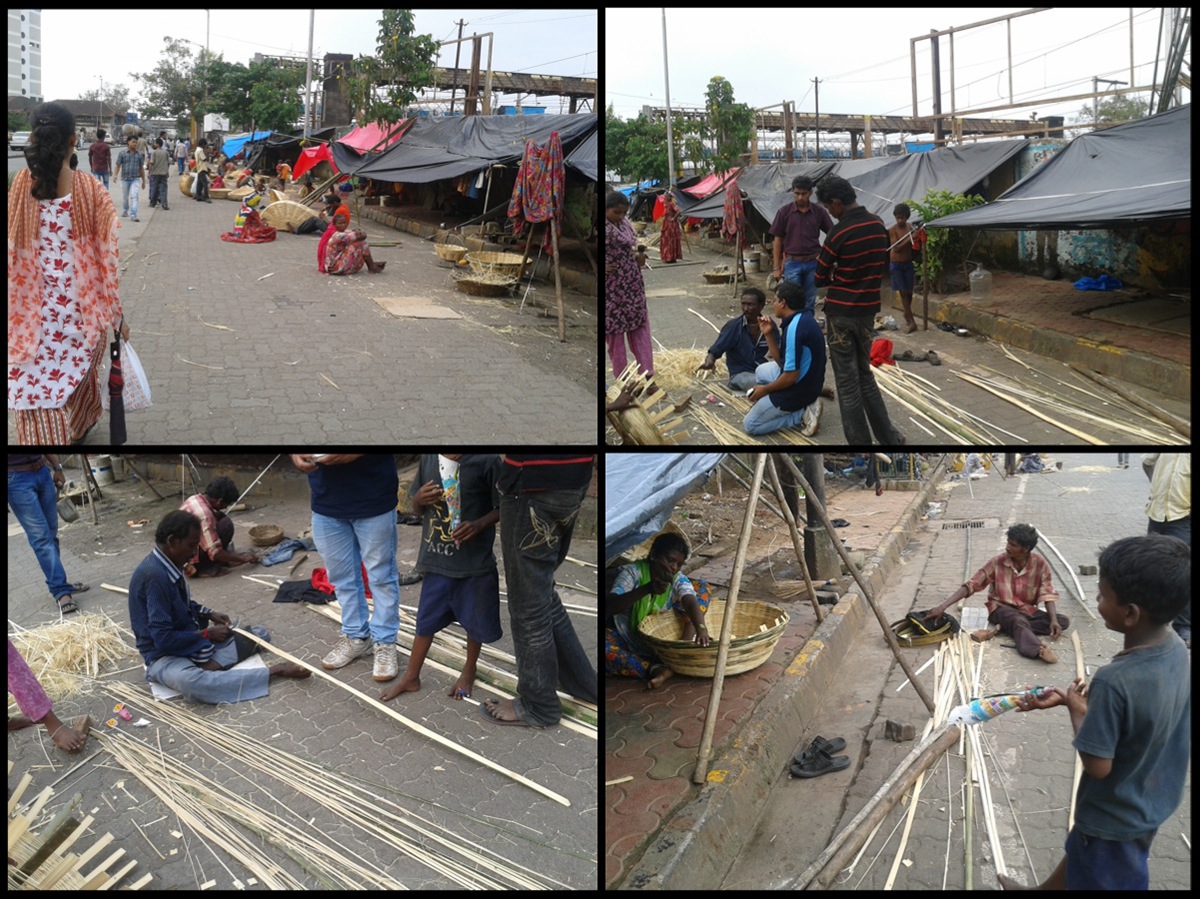
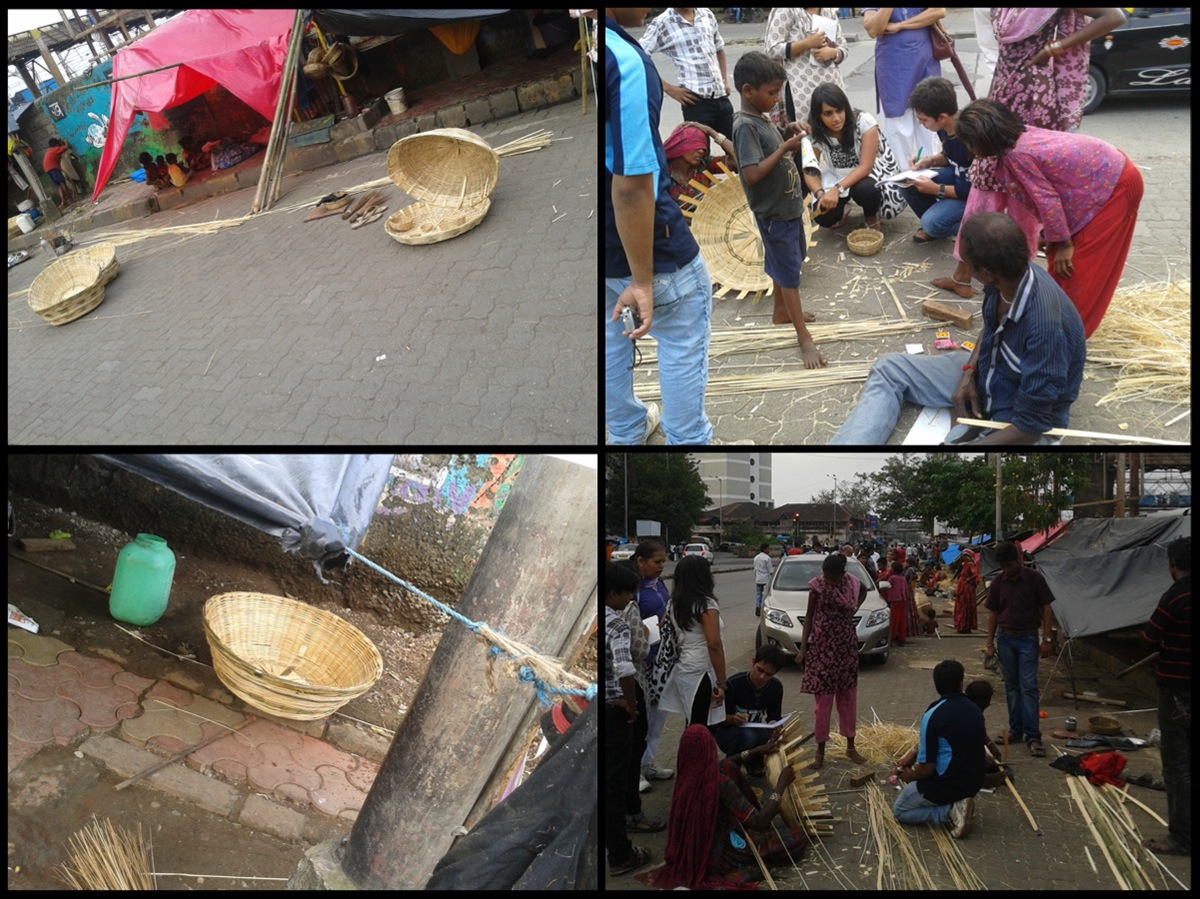
Empathizing the User Experience
Based on the photos and interview contents that the Indian team sent us, we created Persona and Day-in-the-life Map to empathize the user experiences when they interact with their environment.
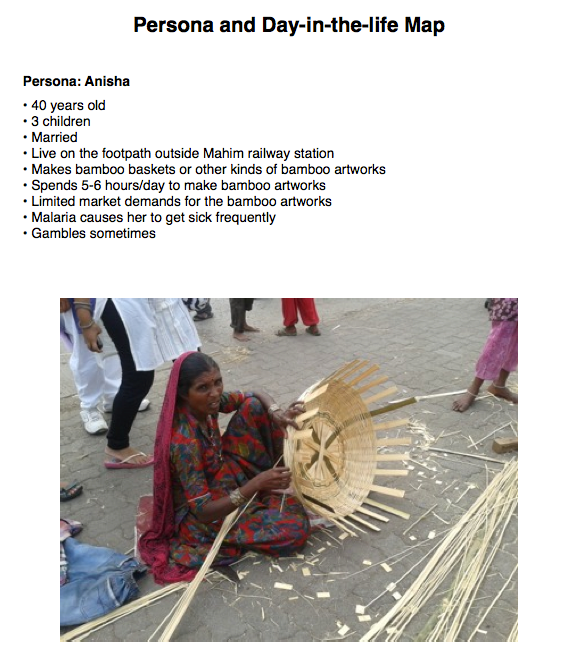

Brainstorming the Paint Points and Solution
After analyzing the user research data and defining the target persona, we used affinity diagrams to reveal key problems and brainstorm possible solutions.
The pavement dwellers of the rapidly growing homeless population in India faces several problems. However, none is more crippling to their ability to move off of the streets than their inability to save their earnings. Without a permanent address, these people are unable to get identification documents and thus, unable to open savings accounts in banks. Instead, they keep their daily earnings in their temporary housing on the pavement or on their persons. This makes saving large sums of money risky, for fear of being robbed, and makes it tempting for the people to spend their money in the short term instead of saving up for a better future life.
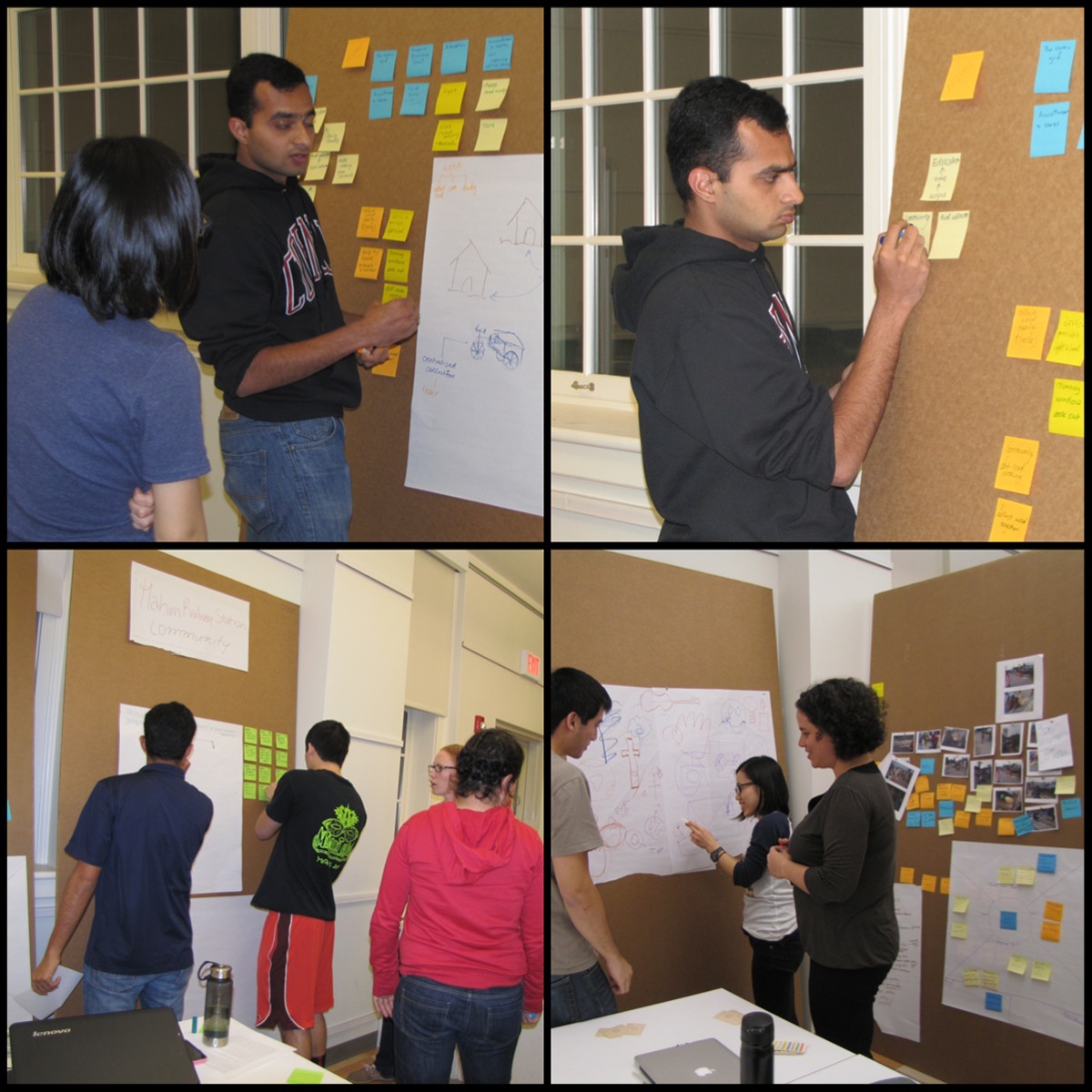
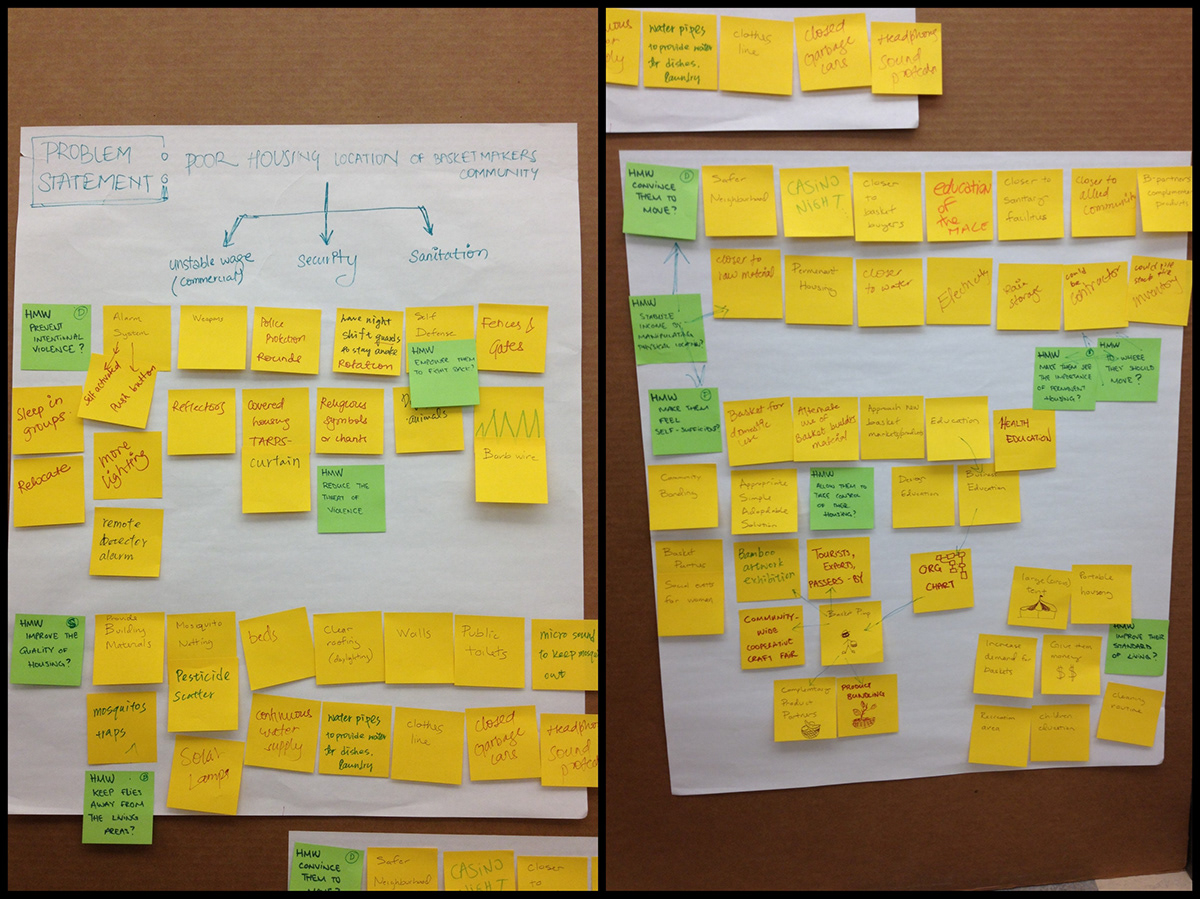
Storyboarding the Solution and User Scenario
To explore possible ideas and validate the ideas with group members, each team member sketched out storyboards. We used the individual storyboards to stimulate the group discussion around key features of each potential idea. After we reached the consensus, we created the team storyboards to imagine more detailed user interactions


Prototyping the Device: Design that is Unique to Bottom-of-the-pyramid Users
SafeLink’s savings service uses a small, handheld device that a SafeLink representative will bring to the community once a week.
Since the pavement dwellers are illiterate and unfamiliar with technology and banking system, the main design goal for the device is: How can we simplify the interaction between the user and the device?
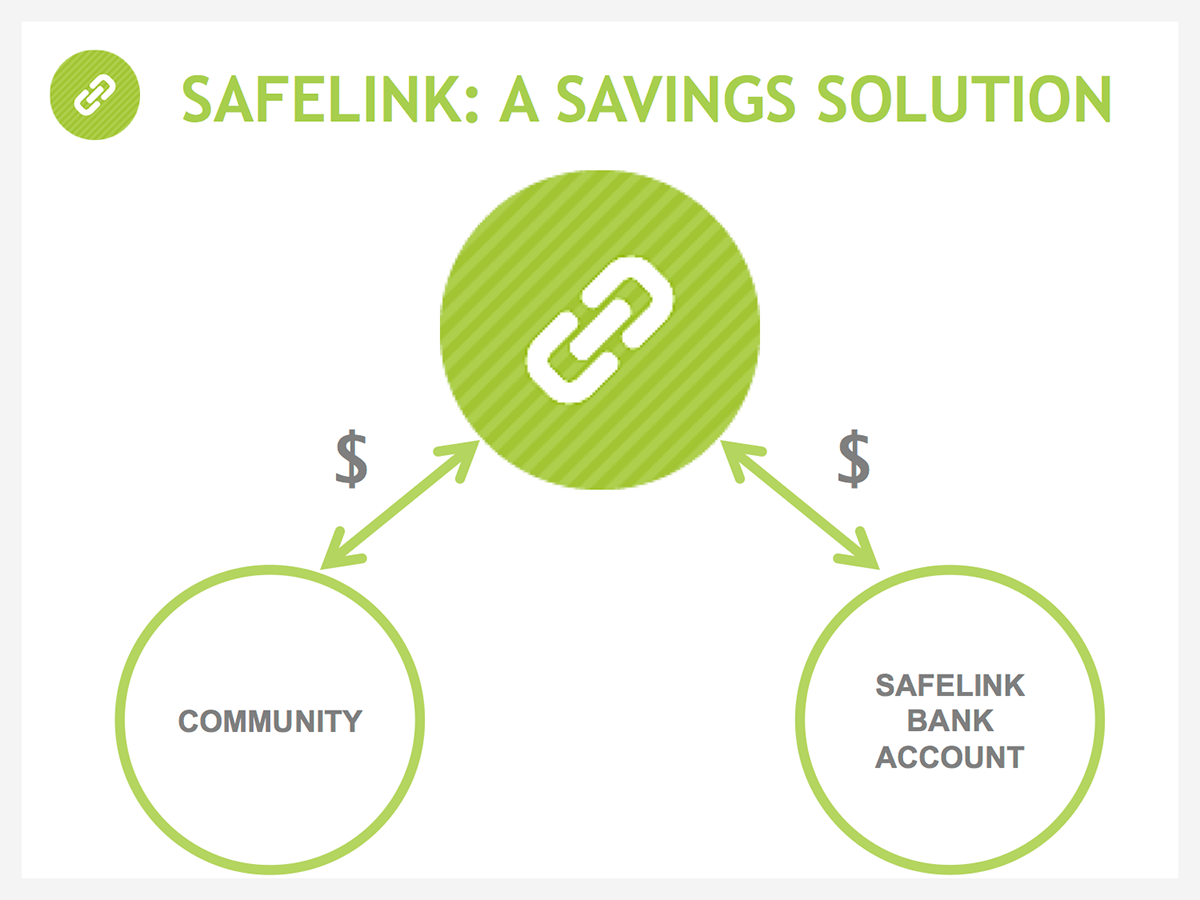
To address this goal, the device is designed as a simple and safe-like box with following parts:
1. Identification mechanism
Rather than using complicated PIN code and debit card to identity the account holder, we adopted a fingerprint scanner to confirm the identity of the user since it can reduce the users' efforts of memorizing the password and keeping the debit card.
Rather than using complicated PIN code and debit card to identity the account holder, we adopted a fingerprint scanner to confirm the identity of the user since it can reduce the users' efforts of memorizing the password and keeping the debit card.
2. Input device
Since most of the users are illiterate, the keypad used numbers and symbols only so that the users can understand the meanings of every control element. This can alleviate users' concerns and fear and raise their interests and willingness to operate the machine.
Since most of the users are illiterate, the keypad used numbers and symbols only so that the users can understand the meanings of every control element. This can alleviate users' concerns and fear and raise their interests and willingness to operate the machine.
3. Cash compartment
There will be a slot on the side of the box through which cash can be put into or taken out of the device. We want to let users witness that the money they save is physically stored within the box so that it could gain the trust from the users.
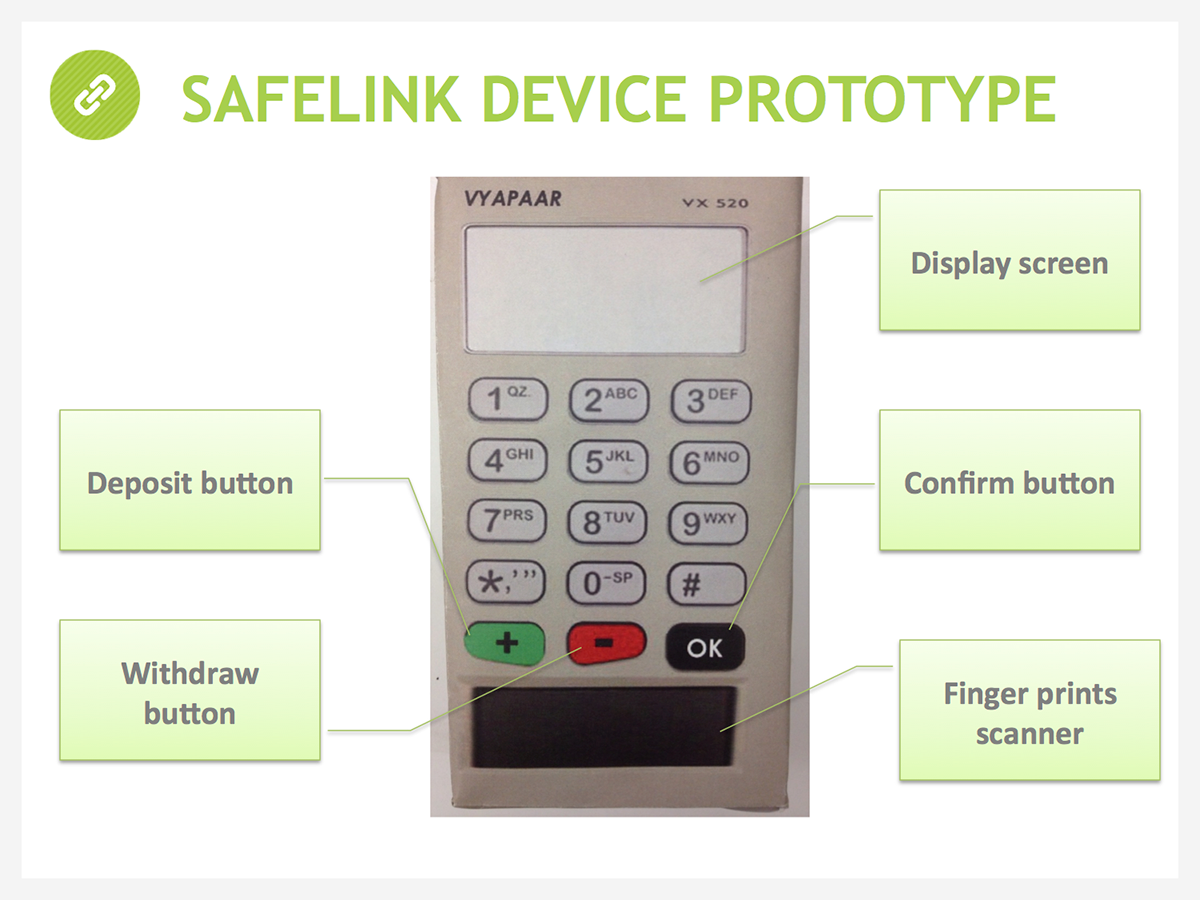
Prototyping the Service Model: Bridging the Gap between Bottom-of-the-pyramid Communities and Financial Services
The main design goal for our service model is: How will we gain the community's trust and educate them in regard to financial service and banking system?
1. SafeLink will approach the communities through the NGO working with them in order to form credibility and trust with the target clients.
2. SafeLink will provide the communities with financial education, preferably in their local language or in Hindi.
3. SafeLink representative will visit the community at least once a week on a scheduled day with a device, using fingerprint recognition to identify the account holders, that enable them to safely deposit or withdraw money.
4. Saving accounts will grant their owners with an annual interest of 3%.
5. Safe Link will send the client a text message confirming the action made.
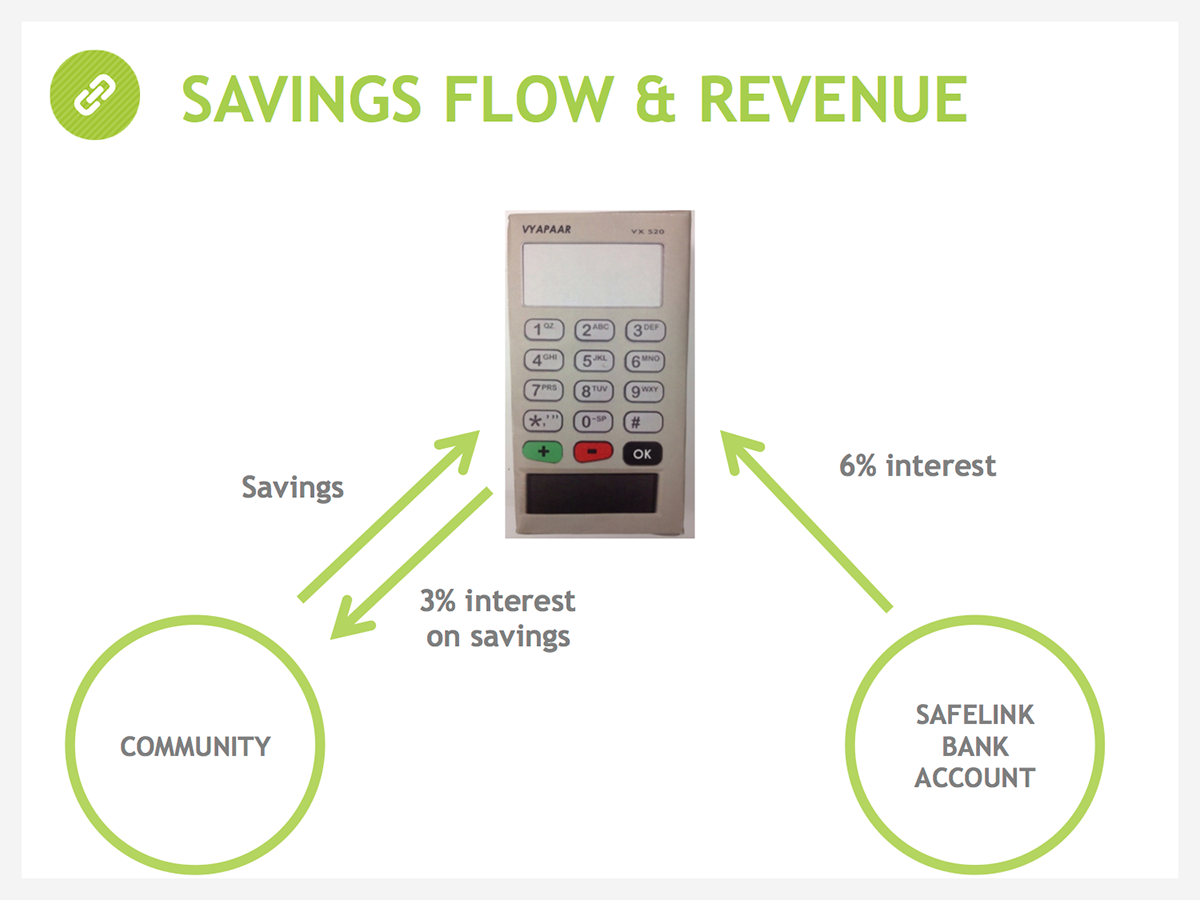
1. Phase-I: Pilot
SafeLink will cooperate with Unity Foundation to provide the Mahim community with the SafeLink services, leveraging Unity Foundation’s existing relationship with the community to gain the trust of the community.
2. Phase II: Initial scale-up
In phase II we look to scale up through replication. Once our plan is implemented, tested, and details are smoothed out, we will focus on replicating our model to another nine communities which Unity Foundation is working with. Many of the slum dwellers also do not hold identification documents required to open a bank account. The few people who have documents do not go to banks due to lack of knowledge, absence of a savings culture and complacency towards the concept of saving. This will give SafeLink an opportunity to examine the extension of its services to communities, who, in theory have access to financial services but do not use them for different reasons.
3. Phase III: Full scale-up
SafeLink will approach additional communities in Mumbai through the NGO working with them. We will rely on the NGO’s relationship with their respective community, as well as a growing user base, to increase credibility. Out of 20.5 million inhabitants in Mumbai, 60 percent are slum dwellers and another estimated 10 percent are pavement dwellers, meaning that SafeLink potential customers’ population in Mumbai alone is nearly 14 million people.
4. Phase IV: Expansion in India
Scale up to additional cities in India with significant pavement and slum drawlers Delhi, Bangalore and Kolkata.

